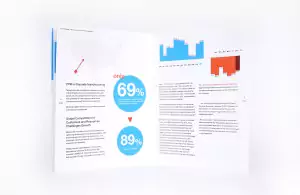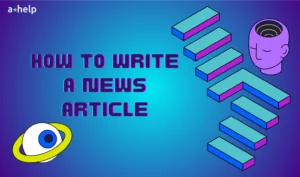 The main purpose of a white paper is to help clients who are seeking solutions for certain issues make informed decisions in favor of a product or a service a company is offering. White papers stand somewhere between an article and a promotional brochure. They contain useful information, show how a problem can be solved with the help of certain products or services, and they push readers towards purchasing those products or services.
The main purpose of a white paper is to help clients who are seeking solutions for certain issues make informed decisions in favor of a product or a service a company is offering. White papers stand somewhere between an article and a promotional brochure. They contain useful information, show how a problem can be solved with the help of certain products or services, and they push readers towards purchasing those products or services.
Steps for Writing a White Paper
- Identify the main problem your audience is facing and form a solution to the problem. Determine the competence of the audience. Your white paper shouldn’t be too simple or too difficult to comprehend.
- Choose the most acceptable style for your target audience. If you write for business people or academics, you shouldn’t be too informal or personal. On the other hand, if you write a white paper for households, being formal and using case-specific terms will discourage your audience from reading your work.
- Write an introduction. In it, tell readers what their main problem is and describe it. Then you must provide proof that the problem really exists. When you state an issue, readers may not believe you. Convince them with evidence, market research results, factual data, and/or statistics.
- List additional smaller problems. Sometimes, describing only one problem, even if it is significant, is not enough to make people understand that actions need to be taken immediately.
- Offer basic solutions. This part of a white paper is great for setting standards, which would indirectly speak in your favor, and which your readers will use to judge your competitors. For example, you can argue in favor of using a specific type of software (that your company is producing) for solving certain problems. However, don’t mention your company and specific products yet.
- When you have convinced the audience in the benefits of the basic solutions you’ve offered, then it is time to supply them with your solution. Introduce your company, and your product. Explain why it is specifically your product or service a customer should buy, and why the solution you are offering is the best of all possible solutions.
- Create a summary, and proofread and edit your piece of writing. If you can’t stay objective while reading your work, delegate this task to the best online assignment writing services. It can provide you with valuable insights on what should be improved.
Topic Selection
The topics for this type of writing tend to follow industry trends. Usually the most pressing issues of certain activities influence the writing. A list of possible topics may include:
- ways of calculating benefits from using a certain product
- enumeration of the most common mistakes in engaging in a certain activity
- using a product to solve a particular problem
- using a product for a specific activity
Key Points to Consider
- White papers are mostly published online and are available for free download. They can also circulate among groups of people who resend them out via email or pass out printed copies hand-to-hand.
- Your white paper can be read by different types of readers who will see the same problem from completely different viewpoints. For example, system administrators will be interested in the technical capabilities of an operating system a company produces, whereas average users will most likely be interested in its entertainment and multimedia features.
- A title page isn’t necessary for a white paper, although many companies include it. If you do, you can also add a short summary of the document’s contents.
- There is no right way or common standard for formatting a white paper. Within its text, various formatting decisions can be used, such as different indentation of paragraphs from the edges, and different fonts and line spacing.
- The tone of a white paper should be serious and professional. No jokes or slang are appreciated in this type of writing. This document helps solve issues and is not designed for entertainment.
Do and Don’t
Do
|
Don’t
|
Common Mistakes When Writing a White Paper
– Turning the white paper into an advertisement.
– Forgetting about the heading. If you compose a catchy heading that represents the key problem your readers are interested in, it will make them want to read on.
– Defining the target audience too broadly. It is definitely not enough to know their sphere of activity, main duties, and a couple of company names. Don’t judge them only by the industry or social groups they belong to. You must know your readers well enough that you are able to literally predict their every move. Knowing small, but important facts about your audience and their needs will result in better sales.
– Ignoring the necessity of calling your readers to action. After they are done reading your white paper, most people will return back to their business. But, if you give them a hint about what to do further or a direction to move in, you can expect the results in the form of sales. Don’t forget to specify contact information and website addresses.
– Beginning a white paper with the description of a company. Most customers care solely about solving their problems and may see your product only as one of various potential solutions. Give them the solution and not the company information.
Follow us on Reddit for more insights and updates.



Comments (0)
Welcome to A*Help comments!
We’re all about debate and discussion at A*Help.
We value the diverse opinions of users, so you may find points of view that you don’t agree with. And that’s cool. However, there are certain things we’re not OK with: attempts to manipulate our data in any way, for example, or the posting of discriminative, offensive, hateful, or disparaging material.